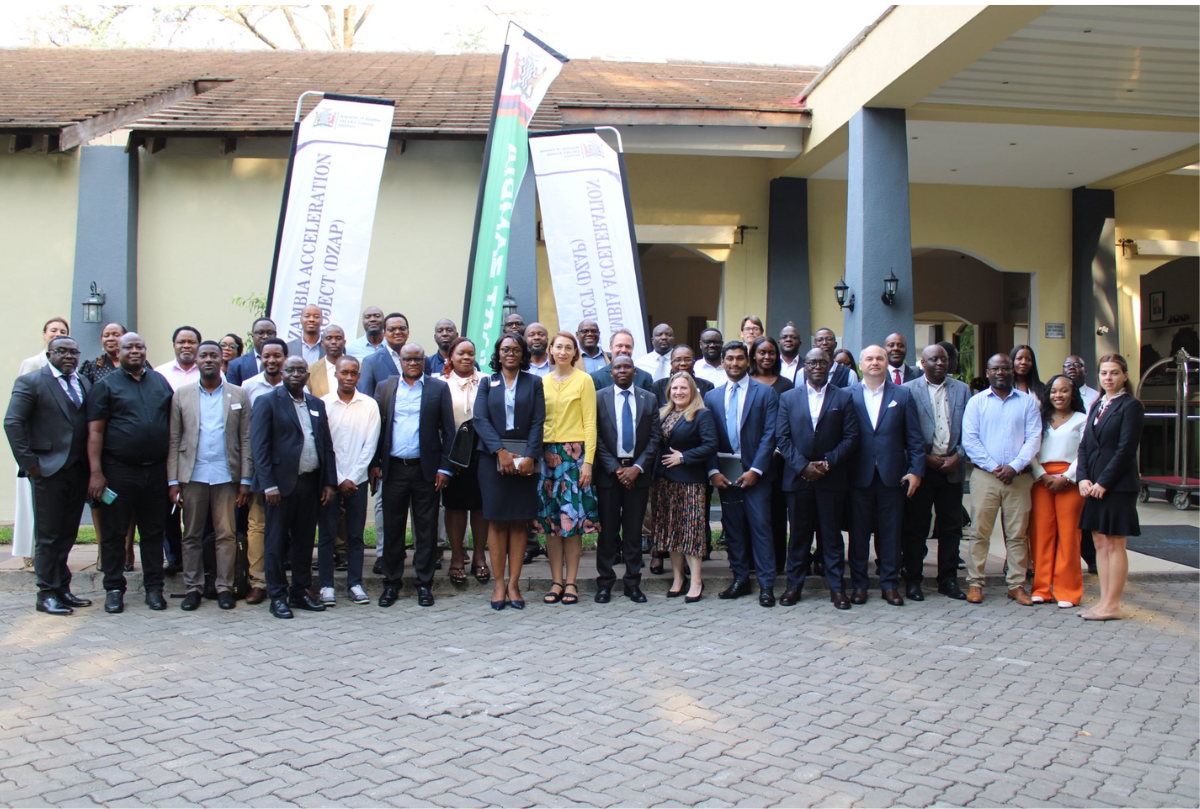Zambia Hosts National Workshop to Strengthen Digital Public Infrastructure Ecosystem – TechAfrica News

Report on Zambia’s National Workshop on Digital Public Infrastructure and Alignment with Sustainable Development Goals
1.0 Introduction: Fostering a Collaborative Digital Ecosystem
Zambia has initiated a National Workshop on Digital Public Infrastructure (DPI) to advance its digital transformation agenda. The event convenes stakeholders from government, the private sector, academia, and civil society. The primary objective is to foster collaboration in building an inclusive and connected digital ecosystem, directly supporting the principles of the Sustainable Development Goals (SDGs), particularly SDG 17 (Partnerships for the Goals).
2.0 Strategic Framework and Core Objectives
The DPI framework is designed to serve as the foundation for modern, efficient, and citizen-centered public service delivery. This initiative, led by the SMART Zambia Institute, is strategically aligned with several key SDGs.
- Collaboration and Inclusion: The framework’s emphasis on multi-stakeholder partnerships is a direct implementation of SDG 17. Its focus on inclusion aims to reduce digital divides, contributing to SDG 10 (Reduced Inequalities).
- Citizen-Centered Services: By prioritizing accessibility, transparency, and citizen engagement, the initiative works towards SDG 16 (Peace, Justice, and Strong Institutions) by building more effective and accountable public institutions.
- Strengthening Infrastructure: The development of a national DPI is a core component of SDG 9 (Industry, Innovation, and Infrastructure), which calls for building resilient infrastructure and fostering innovation.
3.0 Key Partnerships and Project Implementation
The workshop and its associated projects are a testament to effective global partnerships for sustainable development (SDG 17).
- Host and Lead Agency: The SMART Zambia Institute is spearheading the initiative on behalf of the government.
- International Partner: The World Bank is a key partner, providing financial and technical support.
- The Digital Zambia Acceleration Project (DZAP): The World Bank has committed US$100 million to this project, which aims to strengthen institutional trust and align national digital standards, directly contributing to the targets within SDG 9 and SDG 16.
4.0 Vision for an Inclusive Digital Future Aligned with the 2030 Agenda
Zambia’s broader vision is to build a resilient, inclusive, and innovative digital society. The government’s commitment to ensuring that “no one is left behind” in its digital transformation is a direct reflection of the central, transformative promise of the 2030 Agenda for Sustainable Development. This engagement underscores a national strategy to leverage digital technology to achieve comprehensive progress across multiple SDGs, creating a smarter and more connected future for all citizens.
Analysis of SDGs in the Article
1. Which SDGs are addressed or connected to the issues highlighted in the article?
- SDG 9: Industry, Innovation and Infrastructure: The article’s central theme is the development of Zambia’s Digital Public Infrastructure (DPI). This directly relates to building resilient infrastructure, promoting inclusive and sustainable industrialization, and fostering innovation. The focus on a “connected digital ecosystem” and a “smarter and more connected future” aligns with this goal.
- SDG 10: Reduced Inequalities: The article repeatedly emphasizes inclusion. Phrases like building a “more inclusive… digital ecosystem,” ensuring “no one is left behind,” and prioritizing “accessibility” clearly connect the initiative to the goal of reducing inequalities by ensuring that digital transformation benefits all citizens.
- SDG 16: Peace, Justice and Strong Institutions: The initiative aims to create “efficient, modern, and citizen-centered public service delivery” and “strengthen institutional trust.” This directly supports the development of effective, accountable, and transparent institutions at all levels, which is a core component of SDG 16.
- SDG 17: Partnerships for the Goals: The article explicitly mentions the collaborative nature of the workshop, bringing together “key stakeholders from government, the private sector, academia, and civil society.” Furthermore, the partnership with the “World Bank” is highlighted, demonstrating a multi-stakeholder approach to achieving the digital transformation goals.
2. What specific targets under those SDGs can be identified based on the article’s content?
-
Target 9.c: Significantly increase access to information and communications technology and strive to provide universal and affordable access to the Internet in least developed countries.
- The entire initiative, described as the “Digital Zambia Acceleration Project (DZAP),” is aimed at creating a “connected digital ecosystem” and moving towards a “smarter and more connected future,” which directly aligns with increasing access to ICT.
-
Target 10.2: By 2030, empower and promote the social, economic and political inclusion of all, irrespective of age, sex, disability, race, ethnicity, origin, religion or economic or other status.
- The article’s emphasis on an “inclusive” framework and the government’s determination to “ensure that no one is left behind” directly reflects the ambition of this target. The goal is to make digital services accessible to all citizens.
-
Target 16.6: Develop effective, accountable and transparent institutions at all levels.
- The article states that the DPI framework is the foundation for “efficient, modern, and citizen-centered public service delivery.” The project also seeks to “strengthen institutional trust” and develop service models that prioritize “transparency, and citizen engagement,” which are key aspects of this target.
-
Target 17.17: Encourage and promote effective public, public-private and civil society partnerships, building on the experience and resourcing strategies of partnerships.
- The workshop itself is a manifestation of this target, as it “brings together key stakeholders from government, the private sector, academia, and civil society to foster collaboration.” The partnership between the “SMART Zambia Institute” and the “World Bank” is a specific example of such a collaboration.
3. Are there any indicators mentioned or implied in the article that can be used to measure progress towards the identified targets?
- For Target 9.c: While no specific percentage is given, the existence of the “Digital Zambia Acceleration Project (DZAP)” itself is an indicator of national strategy implementation. An implied indicator would be the increase in the number of citizens with access to digital services and connectivity as a result of this project.
- For Target 10.2: The article implies that progress will be measured by the inclusivity of the digital ecosystem. An implied indicator would be the proportion of the population, including vulnerable groups, actively using the new digital public services. The commitment to “accessibility” suggests this is a key metric for success.
- For Target 16.6: The focus on “citizen-centered public service delivery” and “citizen engagement” implies that a key indicator would be public satisfaction with government digital services. The goal to “strengthen institutional trust” also suggests that measuring public trust in institutions would be a relevant indicator.
- For Target 17.17: The article provides a direct, quantifiable indicator: the financial commitment of “US$100 million” from the World Bank to the project. Another indicator is the establishment of a multi-stakeholder partnership involving government, the private sector, academia, and civil society.
4. Table of SDGs, Targets, and Indicators
| SDGs | Targets | Indicators (Mentioned or Implied in the Article) |
|---|---|---|
| SDG 9: Industry, Innovation and Infrastructure | 9.c: Significantly increase access to information and communications technology. | Implied: Increased citizen access to and use of the “connected digital ecosystem” developed through the Digital Zambia Acceleration Project (DZAP). |
| SDG 10: Reduced Inequalities | 10.2: Empower and promote the social, economic and political inclusion of all. | Implied: Proportion of the population, especially from marginalized groups, utilizing the new accessible digital services, ensuring “no one is left behind.” |
| SDG 16: Peace, Justice and Strong Institutions | 16.6: Develop effective, accountable and transparent institutions at all levels. | Implied: Level of “citizen engagement” with public services and increased “institutional trust” as a result of transparent and efficient digital service delivery. |
| SDG 17: Partnerships for the Goals | 17.17: Encourage and promote effective public, public-private and civil society partnerships. | Mentioned: Financial commitment of “US$100 million” from the World Bank. Mentioned: The formation of a multi-stakeholder partnership involving “government, the private sector, academia, and civil society.” |
Source: techafricanews.com
What is Your Reaction?
 Like
0
Like
0
 Dislike
0
Dislike
0
 Love
0
Love
0
 Funny
0
Funny
0
 Angry
0
Angry
0
 Sad
0
Sad
0
 Wow
0
Wow
0














































.jpg.webp?itok=0ZsAnae9#)







:focal(1500,1000)/https://media.globalcitizen.org/a6/9a/a69a4720-d8a1-4715-b596-18738d03c05c/rotary_polio_hero_image.jpg?#)

/countries/sri-lanka/photo-credit---dmc-sri-lanka.tmb-1200v.jpg?sfvrsn=dc298bcc_1#)



















